Sotagliflozin Shows Superiority in T1D Treatment
September 13, 2017
Matt Hoffman
Originally published at: http://www.mdmag.com/medical-news/sotagliflozin-shows-superiority-in-t1d-treatment
Sotagliflozin has been shown to be statistically significantly superior to placebo in patients with type 1 diabetes (T1D) on background insulin therapy, according to results presented at the European Association for the Study of Diabetes (EASD) 53rdannual meeting in Lisbon, Portugal.
The results of inTandem 3, a phase 3 randomized, double-blind study of 1405 patients with T1D with entry level A1C levels between 7% and 11%, showed that 400 mg sotagliflozin reduced A1C 0.79% from baseline compared with 0.33% with placebo, after 24 weeks of treatment (p<0.001).
The primary study endpoint of the proportion of patients with A1C <7% at week 24 was met at approximately twice the rate of placebo for the sotagliflozin arm, with a difference of 13.4% (p<0.001). There were no episodes of severe hypoglecemia and no episodes of diabetic ketoacidosis.
 “The clinically meaningful and statistically significant effects of sotagliflozin on glucose control (A1C) were achieved with a similar rate of severe hypoglycemia while reducing weight and blood pressure in hypertensive patients with type 1 diabetes. The combination of these effects provides a differentiated drug profile and the opportunity for sotagliflozin to transform the treatment paradigm as a novel oral adjunct to insulin therapy in this patient population,” Satish Garg (pictured), MD, lead investigator of inTandem3, professor of medicine and pediatrics, and director adult program at the Barbara Davis Center for Diabetes, University of Colorado Denver said in a statement. “Managing type 1 diabetes can be very challenging for patients and their caregivers and as a clinician treating patients with this condition, these positive results bring promise for our ability to improve lives.”
“The clinically meaningful and statistically significant effects of sotagliflozin on glucose control (A1C) were achieved with a similar rate of severe hypoglycemia while reducing weight and blood pressure in hypertensive patients with type 1 diabetes. The combination of these effects provides a differentiated drug profile and the opportunity for sotagliflozin to transform the treatment paradigm as a novel oral adjunct to insulin therapy in this patient population,” Satish Garg (pictured), MD, lead investigator of inTandem3, professor of medicine and pediatrics, and director adult program at the Barbara Davis Center for Diabetes, University of Colorado Denver said in a statement. “Managing type 1 diabetes can be very challenging for patients and their caregivers and as a clinician treating patients with this condition, these positive results bring promise for our ability to improve lives.”
Additionally, the outcome on every secondary endpoint – including a change in baseline A1C, body weight, systolic blood pressure in patients with ³130 mm Hg, and bolus insulin – also achieved statistical significance in favor of sotagliflozin.
The safety profile of Sanofi and Lexicon’s dual SGLT1 and SGLT2 inhibitor was generally well-tolerated during the treatment period. Rates of treatment-emergent adverse events, serious adverse events, and discontinuations due to adverse events were proven to be consistent with rates seen in the 2 prior phase 3 studies, inTandem1 and inTandem2.
“We are extremely proud to have the inTandem3 results published in such a prestigious journal, which will raise much-needed awareness of type 1 diabetes in the medical community,” Lonnel Coats, Lexicon’s president and chief executive officer, said in a statement. “Collectively, today’s positive findings, as well as data from our two pivotal trials, underline the importance and relevance of the dual SGLT1 and SGLT2 inhibitor mechanism of action in diabetes. As we remain committed to advancing the science in diabetes and bringing innovative therapies to patients to help improve outcomes and ease the burden of managing their diabetes, we look forward to Sanofi’s filing for global regulatory approval for type 1 diabetes in the first half of 2018.”
Approximately 70% of patients with T1D do not reach the desired A1C target of <7%, so the outcomes of inTadem3 are promising and “highlight the large unmet need for new oral medications that can be added to insulin,” according to Juliana Oliveira, the vice president and global project head for the drug at Sanofi.

